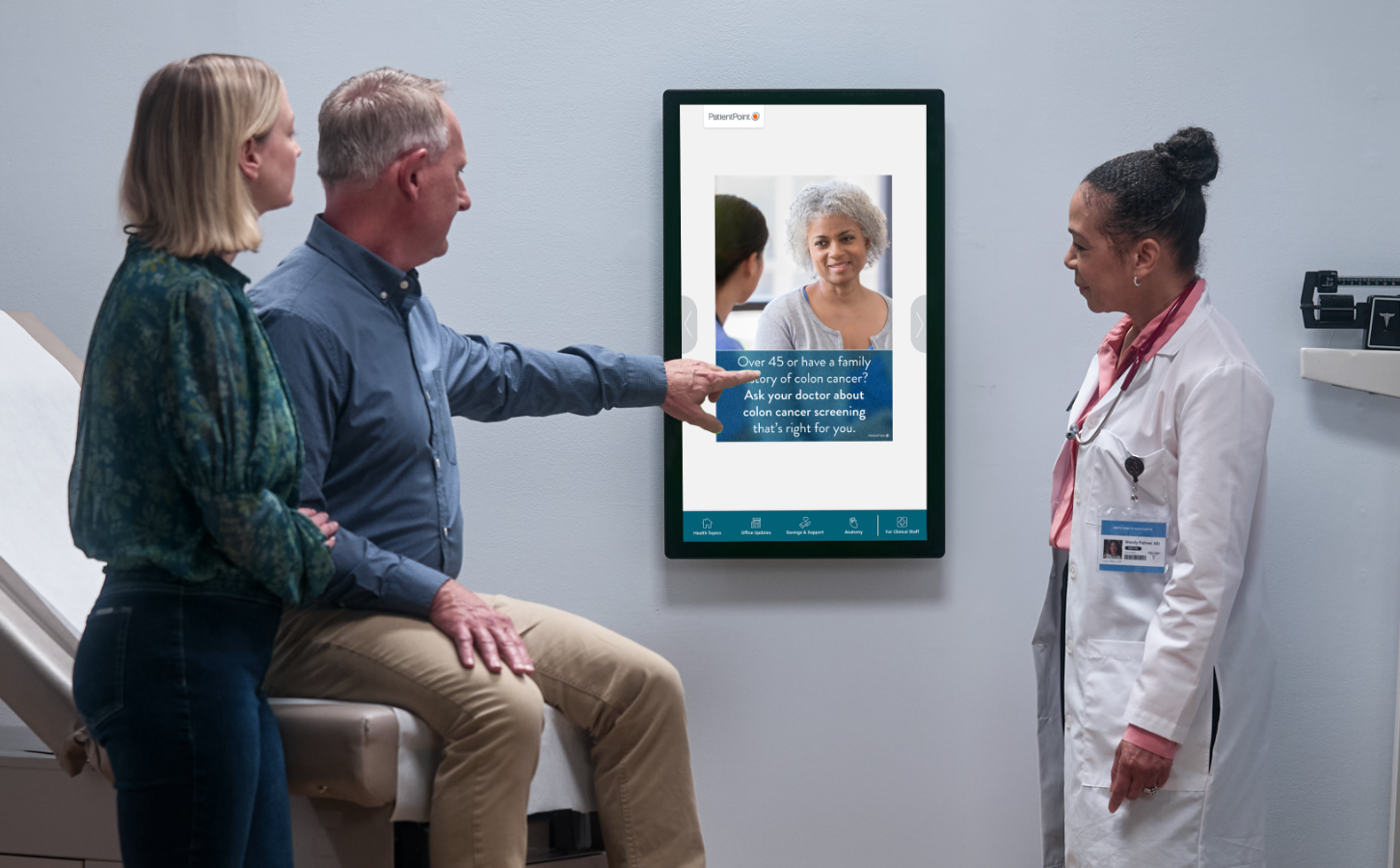Post-pandemic, practices are trying to improve patient participation in cancer screening programs. Patient misconceptions and a lack of education about routine screenings are hindering this initiative. Over a third of Americans (39%) said they didn’t even know they needed to be screened. Additionally, one of the top reasons for unscreened individuals for colorectal cancer is that they thought screening was only for those who have symptoms.
These misconceptions must change to detect cancer and deliver treatment earlier which leads to improved outcomes. At PatientPoint, we believe that consistent, timely and easy-to-understand screening information can create awareness and motivate patients to talk to their doctor about the screenings that they need.
Relevant and timely screening information
Aside from the organizations whose mission is to spread information and improve access to cancer screenings (like the American Cancer Society or the Prevent Cancer Foundation), educating patients on cancer screenings is largely left up to physician recommendations or outreach from the practice after a patient’s appointment. These tactics have seen success when screening numbers are top of mind for healthcare providers. But when patients only visit the doctor for acute care, preventive screening recommendations can be deprioritized as the doctor is addressing immediate needs and concerns.
When patients are in the office, they are receptive to healthcare information, because they’re already thinking about their health, whether they’re in the office for acute care, chronic care or preventive care. By sharing relevant screening and vaccination information during these in-office moments, you can empower patients and encourage them to make healthy lifestyle changes or talk to their doctor about symptoms or initiatives, like cancer screenings.
Making the most of the wait time
An effective and cost-efficient way to provide this information to patients is through digital screens in the waiting room and exam rooms. Digital healthcare signage allows you to personalize a playlist to add the education and information that’s right for your patients and your care goals. You can include screening information along with content like healthy eating tips, condition-specific messages and meditation moments. For the 48% of patients who feel anxiety because of their appointment, having this education already playing when they take a seat in the waiting room can relieve them of some stress—ultimately making them more receptive to the information.
Digital healthcare content also has a higher likelihood of getting patients’ attention as Intel found that animated digital content consistently attracted 4 to 6 times the number of viewers compared to the equivalent static posters. On top of that, patients want this tech-enabled experience with a majority stating they want their doctor’s office to be more modern, and 78% of those individuals saying technology showcasing relevant education is the perfect way to do so.
To prove the impact digital screens have on health outcomes, OnePoll conducted a study on behalf of PatientPoint to look at how our programs influenced patient behavior in getting screenings and vaccinations. The results were impressive. Compared to practices that weren’t using PatientPoint programming, individual provider practices that were running PatientPoint programming saw:
- 45% increase in mammograms
- 20% increase in colon cancer screenings
- 10.9% increase in cervical cancer screenings
- 43% increase in tobacco cessation counseling
Empowering patients through education can make a huge difference in improving health outcomes. Nearly half of all cancer deaths could be avoided if we live healthier lifestyles and get our recommended cancer screenings. Getting a greater percentage of the population on board takes the right information in the right moments to increase awareness and inspire change.
To learn how you can use digital healthcare signage to increase cancer screenings in your practice, visit our Physician Office page.

